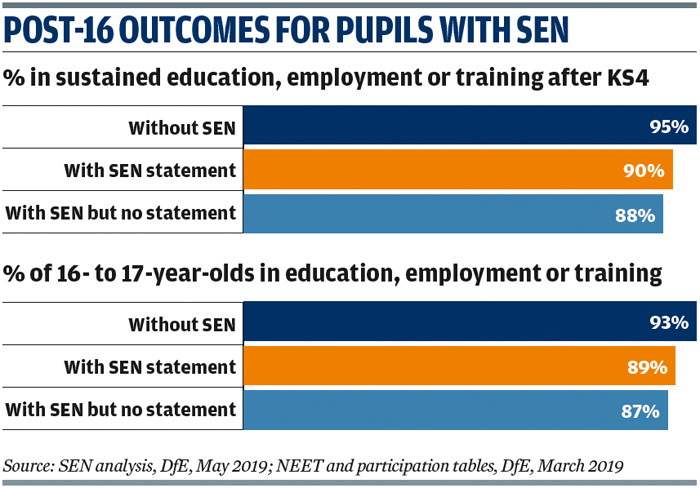Careers advice for pupils with SEND
Derren Hayes
Monday, September 23, 2019
Schools and colleges guide shows how to meet careers guidance benchmarks for pupils with SEND.
A new guide offers secondary and special schools and further education providers advice on implementing a set of benchmarks to help young people with special educational needs and disabilities (SEND) access high quality careers guidance.
The guide collates examples of how schools and colleges across England are implementing the Gatsby Benchmarks - a set of eight standards underpinned by targets - to give their students the information, advice and guidance they need to make informed choices about their futures.
The benchmarks, developed by the Gatsby Foundation and first published in 2014, have been shown to help some schools and colleges greatly reduce the number of pupils who end up being not in education, employment or training.
However, 2017 analysis showed just six per cent achieved between five and eight benchmarks, while 20 per cent achieved none.

The guide explains that having access to good career guidance is particularly important for pupils with SEND because "far too often these young people can be held back by negative stereotypes and assumptions about their limitations".
This is borne out by latest data that shows there are fewer 16- to 17-year-olds with special needs participating in education and training than pupils without SEND.
The proportion of SEND young people in education, employment and training six months after finishing Key Stage 4 is also lower than that of non-SEND young people (see graphics).
The guide outlines what some schools and colleges are doing in order to meet the benchmarks so that other providers can learn from this.
The benchmarks
There are eight benchmarks covering a stable careers programme; learning from careers and labour market information; addressing the needs of each student; linking curriculum learning to careers; encounters with employers and employees; experience of workplaces; encounters with further and higher education; and personal guidance.
Dame Christine Lenehan, director of the Council for Disabled Children, highlights the important role played by school and college leaders in raising aspirations for the 250,000 students in England with special needs.
"For many students, it is the poverty of aspiration rather than their impairments which hold them back, including the aspirations adults hold for young people as well as those the young people hold themselves," she comments.
"We know that good leadership in all settings sets the tone for what's possible, and I was pleased to see that the benchmarks have leadership at their heart."
However, the Association of Colleges, while backing the benchmarks, is concerned that most of the organisations featured in the guide are special schools and colleges, and question if measures they have implemented will be achievable in general further education colleges (see expert view).
EXPERT VIEW
Lack of resources a barrier to implementing Gatsby SEND good career guidance benchmarks
By Liz Maudslay, policy manager, the Association of Colleges
The Gatsby Benchmarks provide some excellent and innovative best practice on how schools and colleges are supporting SEND students with career progression and guidance.
Not only are areas of transition covered, but much attention is rightfully paid to the role social independence plays in the development of young people with special educational needs and disabilities. However, it must be noted that some examples are limited in their description of the wide range of SEND students.
The majority in the guidelines are from special schools or specialist colleges that benefit from education, health and care (EHC) plans, "high needs" funding and a bespoke curriculum.
Staff in these organisations are highly trained and aware of the requirements of their students. In contrast, only around half of students in general further education colleges are on discrete learning programmes led by specialist staff.
The other half will be on a range of regular courses. This raises questions about whether the careers advice they receive is considering their specific SEND needs and whether the careers adviser has the adequate training.
Association statistics show that 18 per cent of all students identified as having some degree of SEND, but only around three per cent would be eligible for and EHC plan. Overlooking the 15 per cent of SEND students is risky as they will not be eligible for supported internships without the plan.
FE colleges face a unique challenge in this respect, using an already overstretched College Disadvantage Fund to fill the gaps for this larger group of SEND students.
Those working on SEND in further education have increasing difficulty finding employers willing to take on these students.
Particularly with the introduction of T Levels, there needs to be real, robust awareness training for employers on the benefits of taking on SEND students and the provisions that should be in place to ensure their needs are met in the workplace.
- Good Career Guidance: Perspectives from the SEND sector, Gatsby Foundation, July 2019




